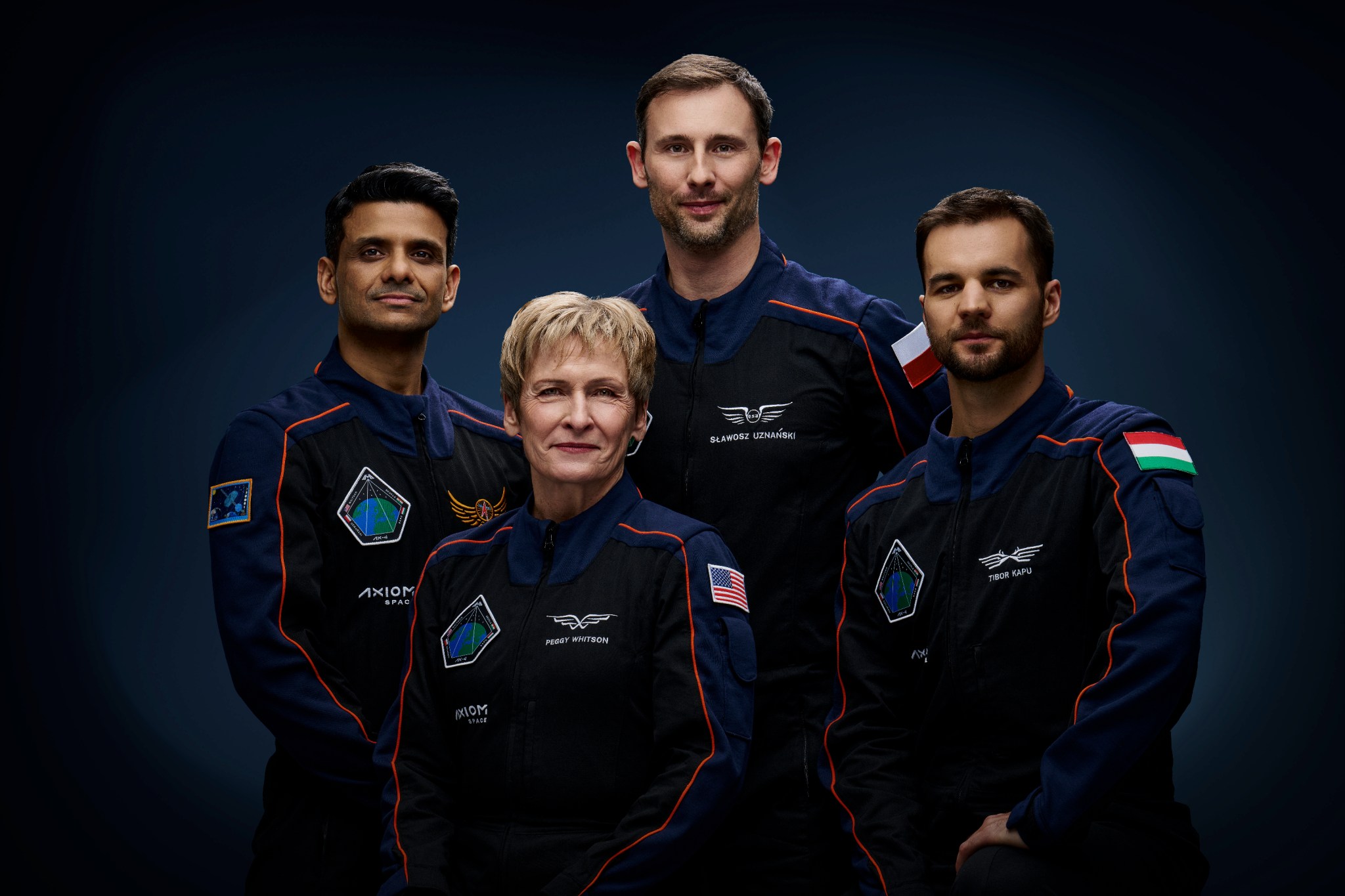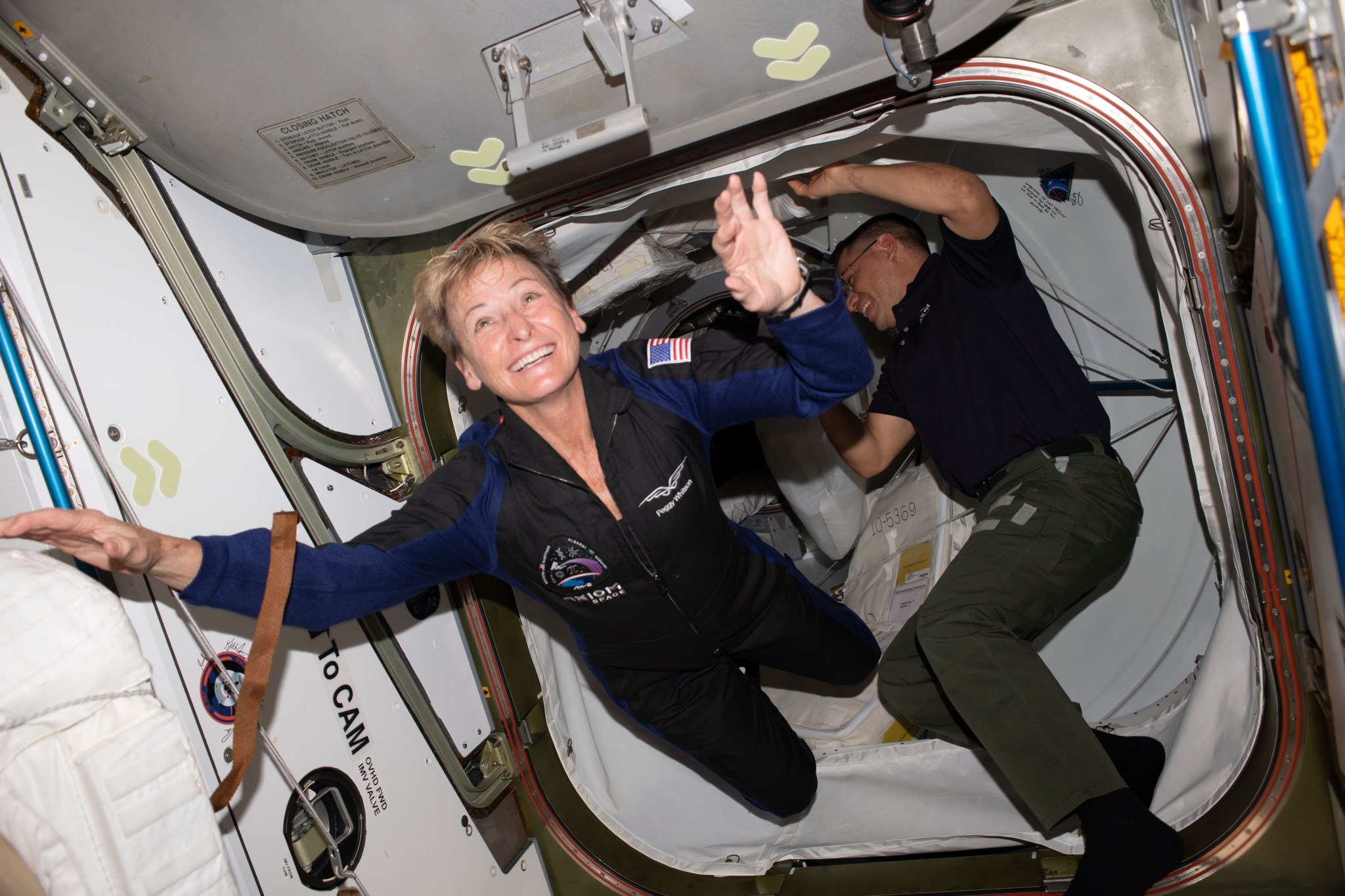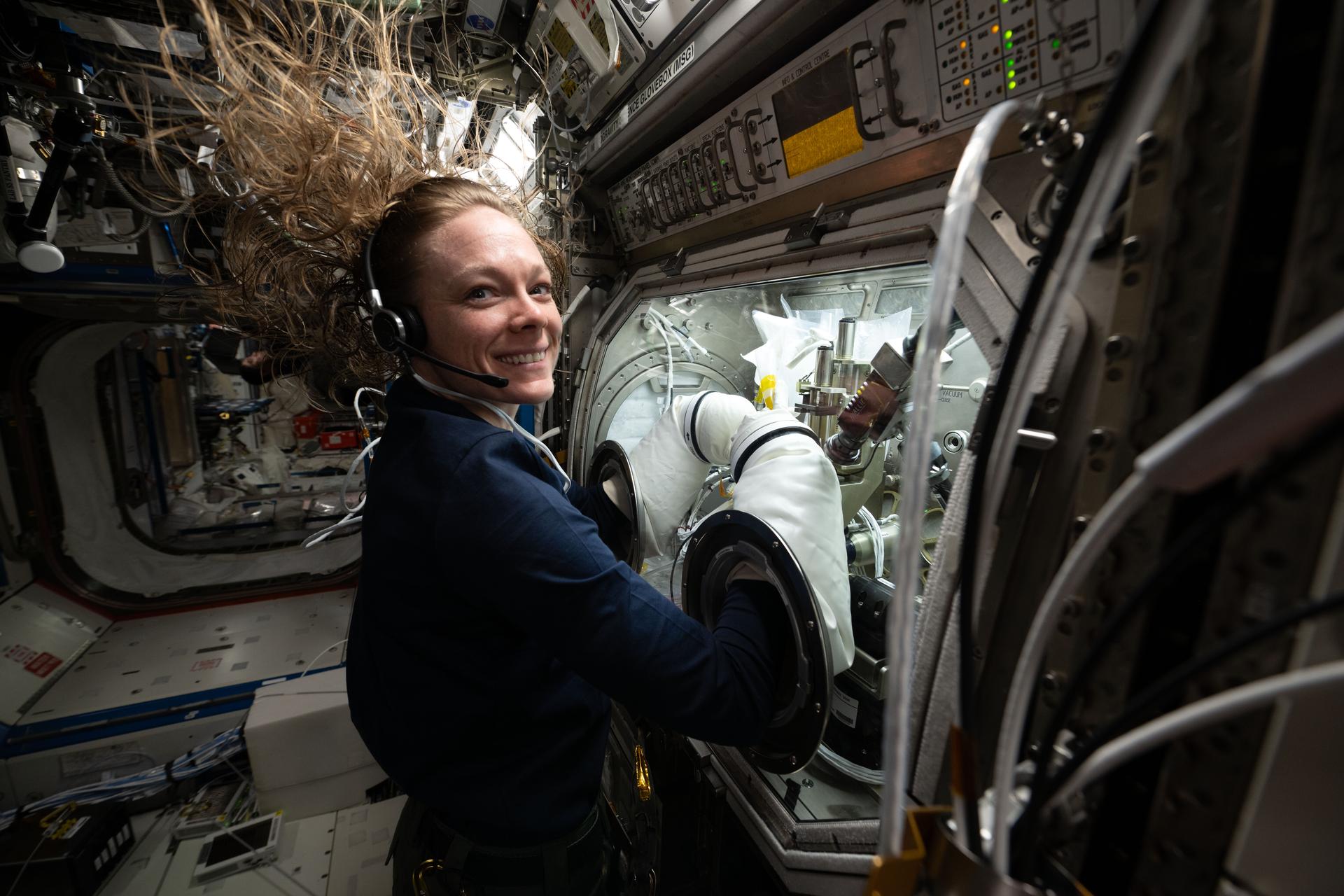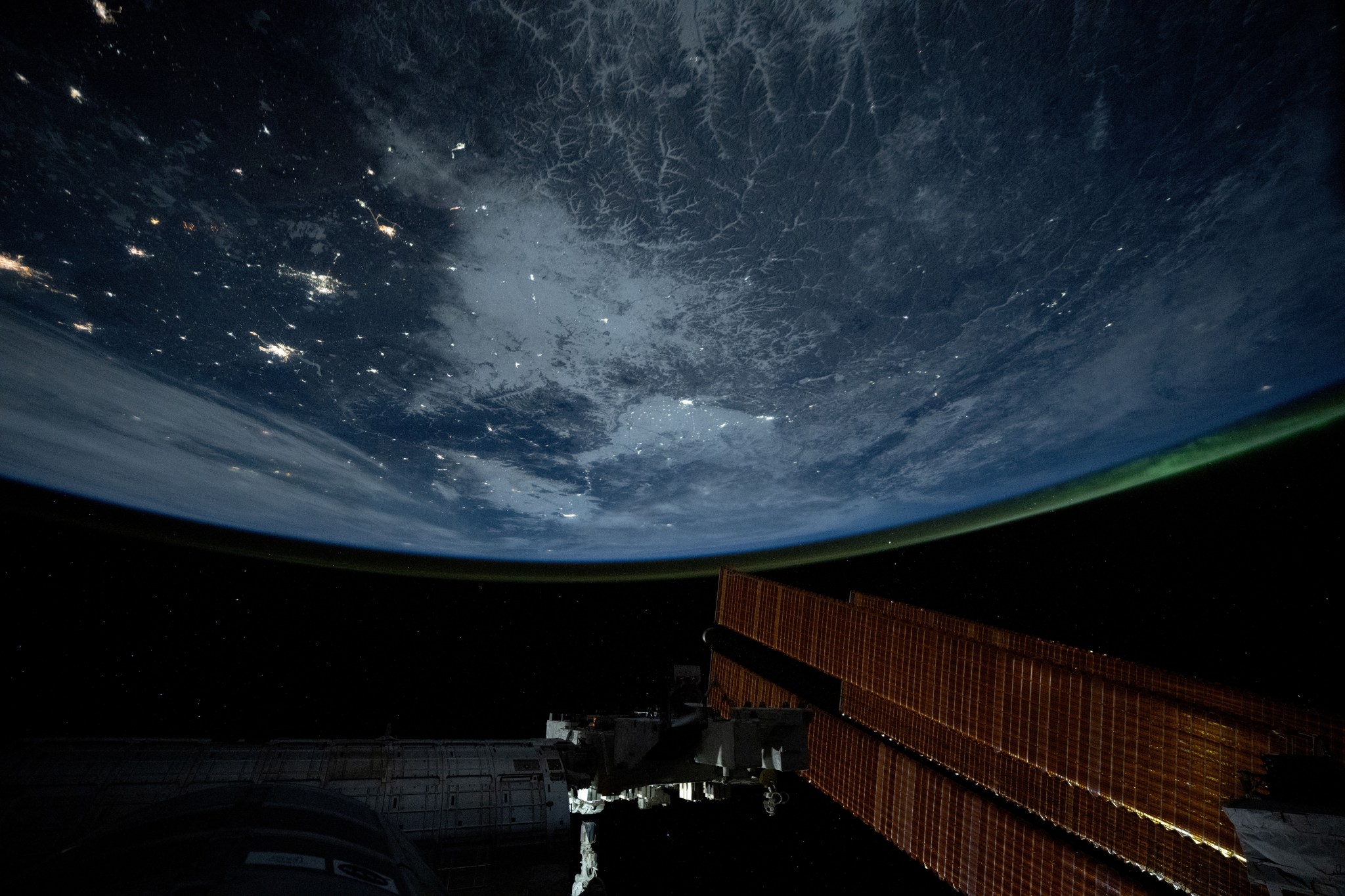Ax-4 “Go” For Wednesday Launch; Station Crew Keeps Up Research, Videography
Axiom Mission 4 (Ax-4) has been given the “go” to launch at 2:31 a.m. EDT on Wednesday from NASA’s Kennedy Space Center to the International Space Station. The four Ax-4 private astronauts will ride the SpaceX Dragon crew spacecraft to low Earth orbit and dock to the orbital outpost’s space-facing port on the Harmony module at 7 a.m. on Thursday for a two-week research mission.
Expedition 73 Flight Engineers Anne McClain and Nichole Ayers, both from NASA, will be on duty Thursday monitoring Dragon during its automated approach and rendezvous. Less than two hours after Dragon docks, the hatches will open and the Ax-4 crew will enter the space station including Commander Peggy Whitson, Pilot Shubhanshu Shukla, and Mission Specialists Sławosz Uznański-Wiśniewski and Tibor Kapu. The Ax-4 private astronauts will greet the seven Expedition 73 crewmates, call down to Earth for welcoming remarks, then participate in a safety briefing with the station residents.
Back onboard the orbiting lab on Tuesday, the four astronauts and three cosmonauts stayed focused on a host of space research to advance pharmaceutical manufacturing and biotechnology. The crew members also continued their video and photography operations documenting life on the space station and imaging Earth landmarks.
Ayers kept up her dayslong scientific work in the Destiny laboratory module swapping syringes filled with protein samples and installing test cells in the Microgravity Science Glovebox. The fluid physics study is investigating using surface tension rather than a container to observe the behavior of proteins in a liquid. Results may inform pharmaceutical manufacturing techniques and 3D printing in microgravity.
Ayers also joined NASA Flight Engineer Jonny Kim and filmed a variety of activities the crew performs throughout its shift. The duo first recorded a tour of the Tranquility module, the cupola, and the Permanent Multipurpose Module. They also filmed how a crew starts its shift, safety procedures, and typical administrative duties. The videos will be downlinked to mission controllers to train future station crews.
McClain began her shift in the Columbus laboratory module and activated the Bio-Analyzer used for cellular and molecular analysis in weightlessness. Afterward, McClain tagged hardware throughout the station’s U.S. segment with radio frequency identification gear to ensure easier inventory tracking.
Station Commander Takuya Onishi from JAXA (Japan Aerospace Exploration Agency) started his shift in the Kibo laboratory module removing and replacing electronics hardware that controls payloads. Next, he set up biomedical hardware that will be used on Wednesday to monitor and prevent space-caused fluid shifts in an astronaut’s body.
Cosmonauts Sergey Ryzhikov and Alexey Zubritskiy joined each other Tuesday and took turns wearing sensors and a blood pressure cuff measuring how blood flows from the largest vessels to the smallest vessels in microgravity. Flight Engineer Kirill Peskov wrapped up a session in the Zvezda service module photographing landmarks across the Pacific Ocean and the South China Sea. Next, Peskov transferred fluids from the station into the Progress 90 cargo craft then serviced ventilation systems inside the Nauka science module.
Learn more about station activities by following the space station blog, @space_station and @ISS_Research on X, as well as the ISS Facebook and ISS Instagram accounts.
Get the latest from NASA delivered every week. Subscribe here.
Powered by WPeMatico
Get The Details…
Mark A. Garcia







